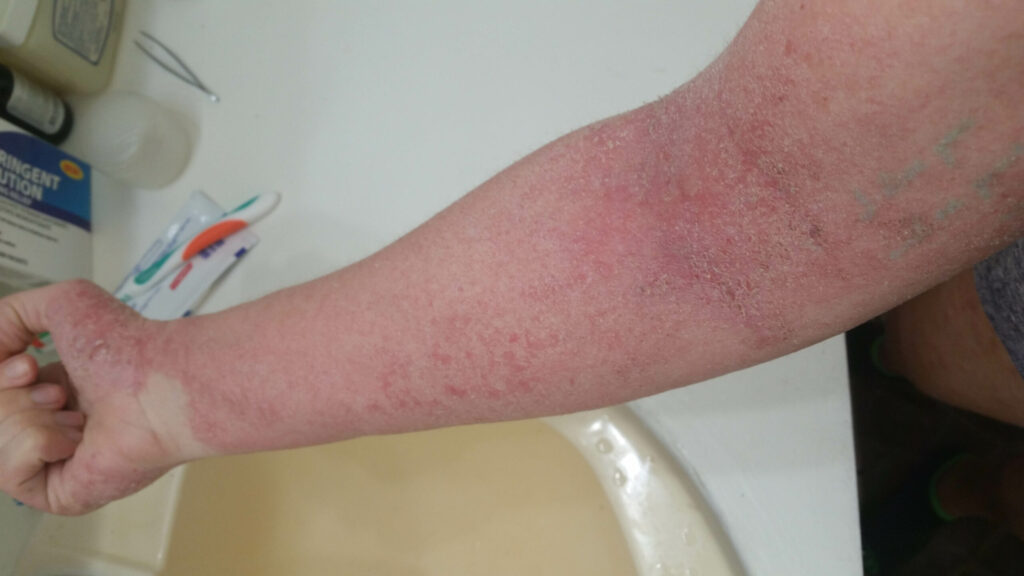Topical steroid withdrawal can be an extremely difficult journey, one that may involve a range of symptoms from mild to severe. It is important to understand what topical steroid withdrawal is and how it affects the skin to make informed decisions about treatment options and other considerations.
This article will provide an overview of topical steroid withdrawal, including its causes, potential treatments, and tips for managing it. Additionally, readers will find resources for further information and support.
1. Understand the Causes and Symptoms of Topical Steroid Withdrawal
Understanding the causes and symptoms of topical steroid withdrawal is essential for anyone who has used this type of medication. Topical steroids are a common treatment for skin conditions such as eczema, psoriasis, dermatitis, and other rashes. Unfortunately, long-term or excessive use can lead to an adverse reaction known as topical steroid withdrawal (TSW). This syndrome is characterized by redness, itching, and burning sensations on the skin that last weeks or months after stopping the use of these medications. It may even cause thinning or discoloration of the skin in some cases.
The exact cause of TSW is still unknown; however, it’s believed to be related to changes in hormones when using topical steroids over a prolonged period. Additionally, people with sensitive skin are more prone to developing TSW than those with normal skin types. Furthermore, there appears to be a genetic component involved in certain cases since individuals from the same family may experience similar reactions after using topical steroids.
Symptoms vary between individuals but often include intense itching on various areas of the body which can become worse at night time; thickening and cracking of the affected area; inflamed patches accompanied by redness and swelling; burning sensation along with stinging pain; blisters filled with clear fluid that might ooze out if scratched; darkening or lightening pigmentation around affected areas as well as permanent scarring due to scratching while trying to relieve symptoms caused by severe itchiness.
It’s important for anyone taking any form of medication including topical steroids not only to understand potential side effects but also to learn how best to manage them if they occur – especially since there isn’t currently any definitive cure available for treating TSW once it occurs.
2. Consult a Dermatologist or Allergist for Diagnosis and Treatment

For many people experiencing Topical Steroid Withdrawal, seeing a dermatologist or allergist for diagnosis and treatment is essential. Doctors can assess the severity of symptoms, offer personalized advice and support, as well as provide medications to help reduce the discomfort associated with this condition.
Medical professionals may also suggest lifestyle adjustments such as avoiding certain skin irritants or wearing protective clothing when outdoors to help manage symptoms. In addition to providing diagnoses and treatments, doctors can be an invaluable source of emotional support during difficult times. They can answer questions regarding possible causes and provide reassurance that it’s important to take care of oneself during this period.
3. Take Steps to Reduce Inflammation
Topical steroid withdrawal (TSW) can cause skin inflammation that can be uncomfortable or even painful. To help reduce this symptom, there are a few steps you can take. Start by limiting your exposure to environmental triggers like stress, heat, and sunburns which can exacerbate the inflammation associated with TSW.
You may also want to avoid using any harsh soaps, lotions, or makeup products on your face until the symptoms of TSW subside as these items could further irritate the skin and make it worse. Additionally, try adding anti-inflammatory foods such as salmon, walnuts, and avocados into your diet – not only will they help reduce inflammation but they’re also great for overall health!
Finally, consider taking supplements containing omega fatty acids which have been shown to reduce inflammation in people suffering from topical steroid withdrawal. Following these simple steps should lead you down a path toward recovery and reduced discomfort from TSWs-related inflammation.
4. Follow Your Doctor’s Recommendations and Use Non-Steroidal Medications as Needed
 Follow your doctor’s recommendations, and use non-steroidal medications as needed. When it comes to topical steroid withdrawal (TSW), the right treatment plan is essential for relieving symptoms quickly and safely.
Follow your doctor’s recommendations, and use non-steroidal medications as needed. When it comes to topical steroid withdrawal (TSW), the right treatment plan is essential for relieving symptoms quickly and safely.
Your doctor will provide a personalized treatment plan that may include using non-steroidal anti-inflammatory drugs (NSAIDs) such as ibuprofen or aspirin, along with other treatments such as light therapy, oral steroids, or antibiotics. It is important to follow your doctor’s instructions exactly so you can start feeling better as soon as possible. Additionally, it may be helpful to talk with friends and family about what you are going through – they often have valuable advice and support that can help during this difficult time.
5. Seek Out Support Groups or Counseling Services for Guidance
If you are dealing with topical steroid withdrawal (TSW), it is important to reach out for help. Support groups and counseling services provide a great opportunity to connect with others who understand what you are going through, as well as offer advice on how to cope and manage the condition.
By joining a support group or seeking counseling, you can find assistance from people in similar situations who have gone down the same path before – ultimately guiding you during a difficult time. Additionally, talking about your experience may give you an emotional outlet which could help reduce feelings of isolation and distress associated with TSW. Many times just knowing that other people are facing similar struggles can be helpful in itself!








